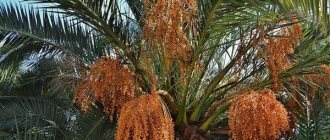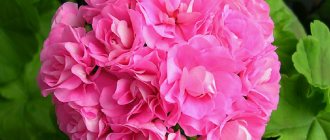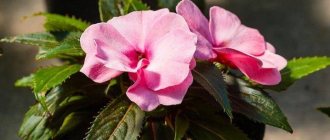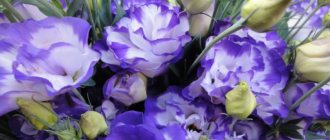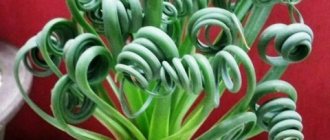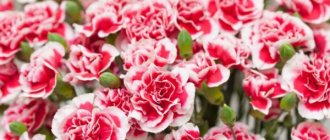Photo: s30556912786.mirtesen.ru Are you looking for something to decorate your garden and yard when the first spring flowers fade? Something that will be quite elegant and bright, but at the same time easy to maintain? Then pay attention to verbena - an elegant herbaceous plant that will cover the area with a colorful carpet. And we will tell you what types of verbena exist and how to care for them!
general characteristics
Verbena belongs to the family of simple and unpretentious herbaceous plants of the same name. These can be small shrubs, a thick flowering carpet, or even tall, straight subshrubs up to several meters tall.
Verbena flowers are always small, up to a maximum of 2.5 cm, but at the same time they are collected in dense inflorescences and brushes. The color spectrum is wide and varied: from white and yellow to pink, dark red and even blue or dark blue.
Some varieties of verbena are actively used in medicine for the treatment and prevention of digestive problems. In cooking, it is often used for flavor in the preparation of preserves and preparations. Medicinal verbena is also in demand among beekeepers and honey lovers.
Photo: domashniecvety.ru
Landscape design
Due to the variety of varieties, verbena is often used in garden design. It goes well with almost all types of flowers and serves as a real garden decoration.
Verbena can be grown either separately or as part of mixed flower beds, as well as for edging borders and fences. Low-growing varieties look great in flowerpots and flowerpots, and ampelous varieties form a spectacular color cascade.
History and use
Simple and unremarkable at first glance, verbena is a sacred plant. The name itself comes from the Latin “word”, because it was verbena that was used in oaths and spells.
The ancient Celts prepared a drink of love from this flower and created protective amulets against evil spirits. And according to Christian legend, it was this flower that grew at the foot of the cross of Christ on Golgotha, and it was used to stop bleeding in wounds.
Photo: pinterest.ru
Verbena was a symbol of Venus, and was carried in amulet even during battles with enemies. It was believed that it gives beauty and youth, and in children it develops abilities and memory. They believed that verbena brings and preserves prosperity and wealth in the home.
Verbena wreaths strengthened friendships and marriages, and its juice tempered iron for swords and daggers. Healers treated all illnesses with it, and washed their hair with its decoction for headaches and worries. Witches used verbena flowers for their spells and love potions.
Photo: qscaping.com
Columnar apple tree: varieties, care and cultivation (photo)
Verbena officinalis: scientific research
Studies have shown that different parts of verbena contain various active substances that have a diverse effect on the body, among them:
- Bitters are substances that stimulate appetite, salivation, increase acidity and the amount of gastric juice.
- An essential oil that has a stimulating effect on the nervous system, an analgesic, antispasmodic effect, it is also a choleretic, expectorant, diuretic and laxative.
- Sitosterol is a plant analogue of human steroid hormones, has an anti-inflammatory, wound-healing and resorption effect.
- Carotene, flavonoids, trace elements.
- Glycosides that have a contractile effect on smooth muscles.
Verbena also contains salicylic acid, vitamin C and other vitamins, on which its restorative and tonic effect is based. It has a beneficial effect on a person’s mental state, harmonizing mood, reducing feelings of fatigue and tension, and improving sleep.
Types of verbena
There are more than 120 species of verbena in the world, but only a few of the most popular ones are cultivated and propagated at home. Most varieties are South American and grow everywhere from Chile to Canada. But some popular species have spread throughout Europe.
Pharmaceutical verbena
Verbena (medicinal) is the most popular and widespread species in our latitudes. This is a herbaceous perennial with a developed rhizome, which grows in height by 30-60 cm. Small flowers are collected in neat paniculate inflorescences, which begin to bloom in the axils of the leaves.
Photo: sadvokrug.ru
Hybrid verbena
Hybrid verbena is a whole group of selected garden varieties that were bred through long-term crossings of wild species. These are annual species that can be low-growing, large-flowered, or even ampelous. Height is from 20 to 70 cm, and long creeping shoots are good in flowerpots and decorative compositions.
Photo: lafa.ru
Verbena canada
This is one of the classic varieties - a low-growing garden shrub up to 20 cm tall. The bunched inflorescences look interesting, which distinguish this variety from the paniculate ones. The color is white, pink or purple, which contrasts favorably with the bright openwork leaves.
Photo: chrome-effect.ru
Lemon verbena
It is an aromatic perennial shrub that grows up to 2 meters in height. The branched stems are covered with bright green leaves, which, when crushed, emit a characteristic citrus aroma with light notes of lemon balm and mint.
Photo: grow-me.ru
Photo: funart.pro
Verbena tough
This is a variety with long creeping shoots, at the ends of which purple and blue buds bloom. Another interesting feature is the hard, toothed, elongated leaves. In its native Brazil, tuberous verbena is perennial, but in our latitudes it grows as an annual.
Photo: wellywoman.wordpress.com
Verbena Buenos Aires
The popular variety is known by many other names: tall, Brazilian, Argentine, lilac-flowered. In its native South America it is a wild perennial, but in our gardens it is grown as an ornamental annual.
This is a large variety with straight erect stems up to 1.5 meters, decorated with lilac umbrella inflorescences. Buenos Aires verbena looks impressive and, together with its jagged leaves, resembles openwork lace.
Photo: zakupator.com
Recipes for folk remedies based on verbena
Verbena tea. Take 12.0-15.0 g of dried grass, pour 180.0-200.0 g of boiling water over them. Take 1 tablespoon every hour for a month for arteriosclerosis and thrombosis.
Lotions with verbena officinalis for skin diseases. Brew the following mixture: verbena - 10.0g, chamomile - 5.0g, rose petals - 10.0g, oak bark - 10.0g, sage leaves - 5.0g. and horsetail herb – 10.0g. Use twice a day as a means to reduce inflammation and alleviate skin diseases.
Infusion for thrombosis and atherosclerosis. Pour 2-3 teaspoons of verbena herb with a glass of boiling water, leave for an hour, strain. Take 1 tablespoon every hour. The same infusion helps with blocked veins.
Verbena care
The undemanding verbena pleases gardeners with its unpretentiousness to conditions, so it is easy to manage in the garden. If you monitor watering, control the density of crops and avoid excessive amounts of moisture, there will be no problems with it.
Temperature
The ideal temperature for young shoots of verbena is above 20 degrees, and an adult plant feels comfortable even at +10. Abundant flowering will continue at 16-25 degrees, but short-term cooling does not affect the condition of the flower. The main thing is that it is returnable, because the flower does not overwinter in the open ground.
Photo: blogger.belhak.ru
Lighting
Verbena loves light, and the more the better, because with a lack of lighting, powdery mildew and other diseases can appear. The flower tolerates drought and heat better than lack of sun and high humidity.
Photo: provenwinnersdirect.com
Photo: 1zoom.ru
The soil
Verbena does not require special soil preparation or even regular loosening. Only with abundant watering in hot weather is it recommended to fluff up the soil for air circulation, otherwise the roots may begin to rot. And to avoid drying out, use mulch made from regular foliage or ready-made decorative mulch.
The soil for verbena is loose, permeable loam, so if the soil in the area is too heavy, add sand. And to protect the root system from moisture, lay a drainage layer of stones, expanded clay or brick fragments.
Photo: sadovyexpert.ru
Watering
The period of active flowering is the very time when verbena especially needs abundant and systematic watering. But by the second half of summer, be sure to reduce the frequency: verbena is resistant to short-term drought.
Photo: liveinternet.ru
Fertilizers and fertilizing
The ideal fertilizer for verbena is mineral fertilizers and special complex formulations. The easiest way is to immediately buy ready-made mixtures, but you can also use prepared organic matter. Apply fertilizer once a season and monitor the nitrogen level: if it is too high, the greenery will grow to the detriment of flowering.
Photo: znaysad.ru Photo: pinterest.com
Trimming
Bushy verbena grows quickly and turns into a thick carpet, the density of which must be monitored during the first time after planting. And the main thing is to weed out the weeds, and then the flowering grass cover will delight you with beauty and neatness.
To make the plant bloom longer, remove the already faded buds: then they will not take up valuable resources. For decorative compositions, bushes can be shaped with ordinary garden shears.
Photo: pxhere.com
Blueberries: varieties, care and cultivation (photo)
Plant propagation
Since in our climate, in the vast majority of cases, verbena is grown as an annual, its propagation is carried out using seeds. The seeds have good germination, so they can be planted in open ground as soon as weather conditions allow. The main criterion is the absence of frost.
Planting seeds in a seedling box
In the case of a short summer, or if it is necessary to achieve early flowering, you can use the method of growing the plant using seedlings. The best time to sow seeds in this case is two months before planting the plant in the ground.
In temperate climates, the plant is planted in the garden in May, therefore, the seedlings should be planted in mid-March. It is advisable to prepare the soil for seedlings yourself.
Its composition may be as follows:
- peat – 4 parts
- leaf soil - 2 parts
- sand – 1 part
Sometimes it is recommended to add half a glass of wood ash to 2-3 liters of soil. Young plants are more vulnerable to fungi, so it is recommended to keep the soil for half an hour in an oven at a temperature of at least 110°C before planting. An alternative option would be to treat the soil with some fungicide, for example, Fundazol.
Verbena seeds, although they have good germination, germinate very unevenly, the delay can reach several weeks. Therefore, before planting, it is advisable to treat them with some kind of growth stimulator.
Sowing is carried out on the surface of leveled and slightly compacted soil, onto which the seeds are evenly applied. There is no need to sprinkle them with a layer of soil; they can remain on the surface.
Verbena shoots
After this, the seeds are watered using a spray bottle. Seeds must constantly remain in conditions of high humidity, so the box with seedlings must be covered with plastic film or glass.
Seeds of most species do not need light to germinate; warmth is much more important for them. The optimal temperature is about +25°C, so it is recommended to place the box with seedlings near a radiator or other heating device.
Every day it is necessary to ventilate the improvised greenhouse and water it with a spray bottle. When the first shoots appear, the box is brought out into the light, and the temperature drops to +15-17°C.
Picking a plant
Picking is done after 2-3 pairs of leaves appear. The plant is planted either in a common box with a distance between seedlings of 5-6 cm, or in individual containers, for example, in peat pots. Immediately after picking, watering the young seedlings is mandatory.
After picking, the seedlings must be placed in a bright place with a maximum level of lighting. 1 week after picking, the seedlings must be fertilized with mineral fertilizers.
In this case, it is advisable to use specially sold sets of fertilizers, for example : Mivena, Master-argo, Clean Sheet, etc. The frequency of such fertilizing is from 1.5 to 2 weeks.
For ampelous varieties of verbena, it is advisable to pinch the plants after the appearance of the fourth pair of leaves.
1-2 weeks before planting the plant in open ground, it is necessary to carry out the procedure of hardening the seedlings. She is left outdoors every day for an hour longer than the previous day.
Planting and propagation of verbena
Verbena is planted directly from seeds or by cuttings, which are stored in the fall. Before frost sets in, dig up the bushes and move them to a cool room until spring. To make cuttings, cut off the tops of the shoots up to five pairs of leaves and cover the cut with charcoal.
A mixture of peat and sand is better suited for rooting, but even in it there is no need to bury the shoot too deeply. After 3 weeks, a sufficiently stable and powerful root system will form under the film for transplantation.
Photo: joinn.com
No special preparation is needed for the seeds, but when sowing they should not be buried in the soil: just spread over the surface. Within just a few days at 20 degrees and above, they begin to germinate, after which you need to move the container to a cool place.
Fresh sprouts are especially sensitive to moisture, so do not overdo it with watering. Seedlings ready for planting will delight you in about 2 weeks, but transplant them into the ground only in consistently warm weather.
Photo: mobilemusic.ru
Care, watering and fertilizing
The plant does not require constant care. It is enough to water the flower during dry periods. If there is an excess of moisture, fungal infections develop; if there is too little, when the earthen ball dries out, seed pods are actively formed, and new buds are not formed. During periods of heavy rain, drainage or drainage is provided so that water does not stagnate at the roots. Verbena will not grow in flooded areas.
Now about feeding. During the growth period, the bush needs nitrogen, when buds are laid - other microelements: potassium, calcium, phosphorus. Fertilizers are applied no more than once a month. With an excess of fertilizers, the plant is inhibited.
Pest and disease control
Unpretentious verbena rarely gets sick and is practically not interesting for garden pests. But if the conditions are violated, the soil is excessively moistened or weeding improperly, you can run into trouble.
The most common problem is powdery growth, which causes leaves to darken and die. If you find it, remove all damaged areas and spray the verbena with special fungicides. The same goes for rot: if the plant turns pale and withers, the first thing is to prevent the problem from spreading.
Among insects, aphids and leaf miners are sometimes found, which feed on leaves. But to combat them you do not need to undertake any complex manipulations: regular use of insecticides is enough.
Photo: dacha.today Photo: mrfilin.com
Periwinkle (60 photos): varieties, care and cultivation
Planting seedlings in the ground
Verbena is planted in the ground only after a period of frost. The plant can easily tolerate transplantation while in flowering condition. It must be done together with a lump of soil.
special scheme for planting verbena, since everything depends on the size of the bushes, the composition of the flower garden and the area of the territory. Verbena prefers loose, fertile, aerated soil.
First, you need to add complex fertilizer with humus to the soil. To grow in a container, you need to put drainage on the bottom (a thin layer of expanded clay) and add perlite to the soil.
If the plant is planted on a rainy day, watering should be avoided. If there is dry soil, about two glasses of water are poured into each hole before planting verbena.
After it is absorbed and the seedlings are buried in the holes, the soil on top is slightly compacted . Watering should be moderate.
Verbena – photo
The simplicity and unpretentiousness of verbena are combined with its neat and graceful beauty. Convince yourself of this thanks to the photographs in our gallery. Enjoy watching!
Photo: plants.tlcgarden.com
Photo: etovarikoz.ru
Photo: chrome-effect.ru Photo: greenagri.ru
Photo: 2sotki.ru
Photo: artfile.ru Photo: dvervleto.su
Photo: 1zoom.ru
Photo: vasily-sergeev.livejournal.com
Photo: liveinternet.ru
Photo: ludmila20141.livejournal.com
Photo: flormar-shop.ru
Photo: pxhere.com Photo: plants.chaletnursery.com Photo: ok.ru
Photo: dlobal.ru
Photo: stroypay.ru
Photo: tsvetovodovklub.ru Photo: pixy.org
Photo: pixabay.com
Photo: avto.goodfon.com
Photo: dacha73.ru
Photo: 1zoom.ru
Photo: pinterest.ru
Photo: pixabay.com Photo: pixabay.com
Photo: polemo.ru
Photo: greenway-schop.ru
Photo: lesserresdebutry.fr
Photo: landshaftadvice.ru
The use of individual parts of verbena officinalis
Most often, the inflorescences, leaves and herb of verbena are used for medicinal purposes; essential oil is obtained from them, which is included in ointments for external use, tablets and lozenges; infusions, tinctures and decoctions are also made from it, which are taken orally.
The roots are mainly used in cooking for adding to marinades - they give the preparations a characteristic spicy taste.
Verbena fruits are poisonous.
Verbena seeds are used for its cultivation. They have a dense shell and to increase germination before planting in the ground they are placed in the refrigerator for 4-5 days (seed stratification).
Where can I buy it and for how much?
You can purchase verbena seeds or cuttings only in specialized stores . Basically, these are flower shops or for amateur gardeners. Seeds are sold in bags of 5-10 pieces. The price, depending on the variety and number of seeds, ranges from 15 to 650 rubles (seed germination is low - no more than 30%, so before purchasing a particular variety of verbena, you need to consult a specialist about the peculiarities of cultivation).
The most expensive seeds are hybrid varieties from Europe: Amsterdam and Paris. In addition, seeds of rare garden plants (this includes verbena) can also be purchased in time-tested online stores. For example, in AGROSERVER you can buy medicinal verbena for 30 rubles for a bag containing 50 seeds, and in “Seeds Here” you can buy different types of flowering varieties of this plant from 15 to 21 rubles per bag.
What does this beautiful herbaceous plant look like?
Depending on where it grows, verbena looks different : in a very warm climate, this perennial plant reaches 1.2 m, the trunk becomes lignified, it rather resembles a shrub, and often grows wild or in flower beds without replanting. But in temperate and cold climates it is an annual with short herbaceous branches that die off during the first frost.
Green or brown-green stems, depending on the species, can be:
- creeping (falling beautifully from the trunk or from the flowerpot);
- prostrate (forming a rosette from the main trunk);
- erect (stretch upward, creating a thick green mass);
- pubescent (small fluffy whitish threads cover the trunk);
- smooth.
The leaves of verbena are either narrow, whole, or dissected, or pinnately incised. There are many of them on a branch, arranged alternately (rarely - whorled, i.e. from each node there are 3-4 leaves), so even an annual plant gives the impression that a perennial shrub is growing. The edges of the leaves have small, non-sharp (in some varieties turning into an elongated oval shape) or sharp teeth.
Verbena flowers are amazing with their dim beauty! They are collected in inflorescences (from 20 to 50 pieces). A separate peduncle is a five-toothed calyx with a five-lobed corolla. Flowers may be collected in racemes, spikes, or paniculate inflorescences . And how beautiful their color scheme is:
- blue and light blue;
- pink and red;
- white and yellow;
- cream and purple.
And this diversity pleases from the beginning of June to the end of October.
